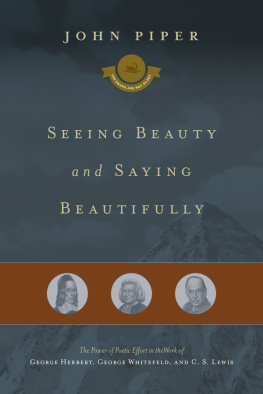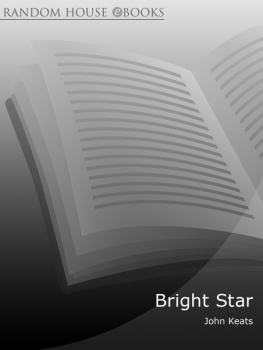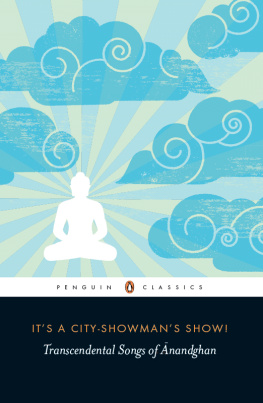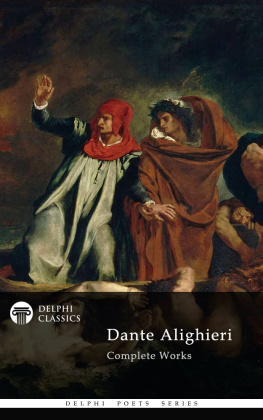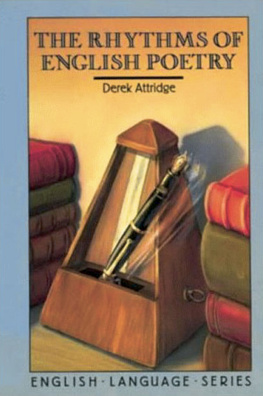
PENGUIN ENGLISH POETS
GENERAL EDITOR: CHRISTOPHER RICKS
GEORGE HERBERT: THE COMPLETE ENGLISH POEMS
G EORGE H ERBERT was born in 1593, the fifth son of Richard Herbert of Montgomery and Magdalene Herbert, to whom John Donne dedicated his elegy Autumnal Beauty. He was educated at Westminster School and Trinity College, Cambridge, where he was appointed Reader in Rhetoric in 1618 and Public Orator in 1620. Herbert was an excellent Greek and Latin scholar and was fluent in Italian, Spanish and French; he was also an accomplished amateur musician. He seemed destined for a great public career and attracted the attention of two powerful and influential figures, the Duke of Richmond and the Marquess of Hamilton, and, when they met, King James I took a liking to him. However, when his two aristocratic patrons, and then, in 1625, King James, all died, any hope of immediate preferment was dashed. In 1626 he resigned his seat in Parliament and took holy orders, becoming Rector of Bemerton, a tiny rural parish on Salisbury Plain, in 1630. In the previous year he had married Jane Danvers after a courtship of only three days, and their marriage was a happy one. Herbert died of consumption at the age of forty on 1 March 1633.
Early in 1633 Herbert, aware of his imminent death, sent a copy of his book The Temple to his friend Nicholas Ferrar, requesting him to burn it or print it as he saw fit, and two editions were published before the end of that year. The Temple comprises almost all his surviving English poems, and it is upon this volume that his reputation rests. His other surviving work includes a set of Latin poems, Memoriae Matris Sacrum, written in memory of his mother; a handful of short occasional poems; two sets of sacred poems, Lucus and Passio Discerpta; and Musae Responsoriae, a defence of the Church of England against Andrew Melvilles Anti-Tami-Cami-Categoria. Of his prose, A Priest to the Temple, notes on The Hundred and Ten Considerations by Juan de Valds, the translation of Luigi Cornaros Treatise of Temperance and Sobrietie, some of his Latin letters and orations, and a portion of his private correspondence have survived. Thirteen editions of The Temple were published between 1633 and 1679; after that his reputation began to wane. However, the 1799 edition of The Temple heralded a revival, to which Coleridges appreciation in Biographia Literaria gave a considerable boost: George Herbert is a true poet, but a poet sui generis, the merits of whose poems will never be felt, without a sympathy with the mind and character of the man.
J OHN T OBIN has studied at Boston College, the University of Toronto (MA, Ph.D.), and Kings College, London, as a Fulbright Scholar. His work on the sources of Renaissance poetry and drama has appeared in numerous journals and Festschriften, as well as in his study of Apuleius in the Renaissance, Shakespeares Favorite Novel. He has taught at Boston College, York University, in Canada and at Clark University in Massachusetts. He is currently a Professor of English Literature at the University of Massachusetts at Boston.
GEORGE HERBERT
The Complete English Poems
Edited by JOHN TOBIN
PENGUIN BOOKS
PENGUIN BOOKS
Published by the Penguin Group
Penguin Books Ltd, 80 Strand, London WC2R 0RL , England
Penguin Group (USA) Inc., 375 Hudson Street, New York, New York 10014, USA
Penguin Books Australia Ltd, 250 Camberwell Road, Camberwell, Victoria 3124, Australia
Penguin Books Canada Ltd, 10 Alcorn Avenue, Toronto, Ontario, Canada M4V 3B2
Penguin Books India (P) Ltd, 11 Community Centre, Panchsheel Park, New Delhi 110 017, India
Penguin Group (NZ), cnr Airborne and Rosedale Roads, Albany, Auckland 1310, New Zealand
Penguin Books (South Africa) (Pty) Ltd, 24 Sturdee Avenue, Rosebank 2196, South Africa
Penguin Books Ltd, Registered Offices: 80 Strand, London WC2R 0RL , England
www.penguin.com
This edition first published 1991
Reprinted with a new Introduction and corrections 2004
This edition, introductory matter and notes copyright John Tobin, 1991, 2004
All rights reserved
The moral right of the editor has been asserted
Except in the United States of America, this book is sold subject to the condition that it shall not, by way of trade or otherwise, be lent, re-sold, hired out, or otherwise circulated without the publishers prior consent in any form of binding or cover other than that in which it is published and without a similar condition including this condition being imposed on the subsequent purchaser
ISBN: 978-0-14-196586-4
INTRODUCTION
George Herbert is either our most major minor poet in English literature or he is the most modestly exquisite of our major poets. The modesty of his poems is both attitudinal and structural, sweetly charming in the literal etymological sense of charming, and limited in size if not number. The more than one hundred and seventy poems that make up The Church, the central section of The Temple, are briefer than the songs of complaint, praise, penitence and thanksgiving that make up the Book of Psalms of the sweetly singing David, but are more numerous. Valued over the centuries by discriminating readers, Herbert remains a much-loved and much-studied poet even in the largely secular twenty-first century. There are several explanations for the popularity of his poetry, or, if popularity is too strong a term, widespread and often deep appreciation, respect and affection. First, there are still many readers who share Herberts belief in a Christian God of salvation and love. The poems which so often reflect what Herbert himself said are, according to Izaak Walton, his first biographer, the many spiritual conflicts that have passed betwixt God and my soul, before I could subject mine to the will of Jesus my Master, in whose service I have now found perfect freedom speak to the religious, moral and psychological tribulations and joys of such devout and devoted readers. Second, there are the readers who once shared the faith of Herbert, but who no longer believe in the story he tells as a participant, yet, out of a feeling of nostalgia, find pleasure, perhaps comfort, in the momentary suspension of disbelief in the poets ordered world. Third, there are the academic readers of Herbert who find scholarly pleasure in the observation of the poets creative manipulation of his sources, not only from the Bible but also from his immediate English predecessors Spenser, Sidney, Shakespeare, and most especially Donne and in the additional appreciation of Herberts images, rhythms and phrases being reworked in such nineteenth- and twentieth-century poets as Emily Dickinson, Gerard Manley Hopkins, Thomas Hardy and Elizabeth Bishop. Fourth, there are the great many lovers of poetry who are not necessarily Christian, nostalgic or academic but who find pleasures in the works of someone whose combination of formal artistry and clear enthusiasm for his subjects is attractive in itself.
The first three classes of reader, especially the third, will want to fix Herbert in an exact position on the sectarian spectrum of early seventeenth-century Protestant Christianity. Alas, for all his precision of wording, Herbert frustrates the desire for such certitude. The best that we can say is that he is not High church or, to use the term anachronistically, Anglo-Catholic or Laudian, but he does prefer ceremony over barrenness and is drawn frequently and powerfully to the image and role of the Eucharistic sacrament. The church windows in his poem with that title, if not in his own little church in Bemerton, have some stained glass in them, while the longest poem in
Next page


